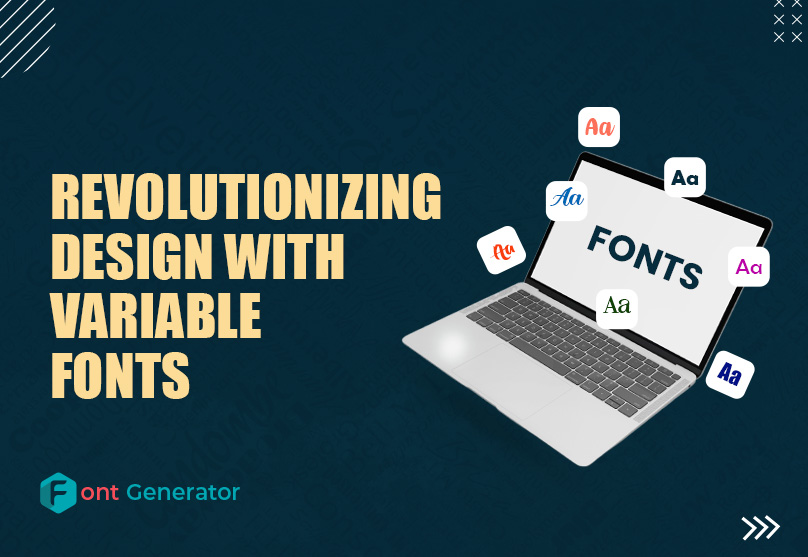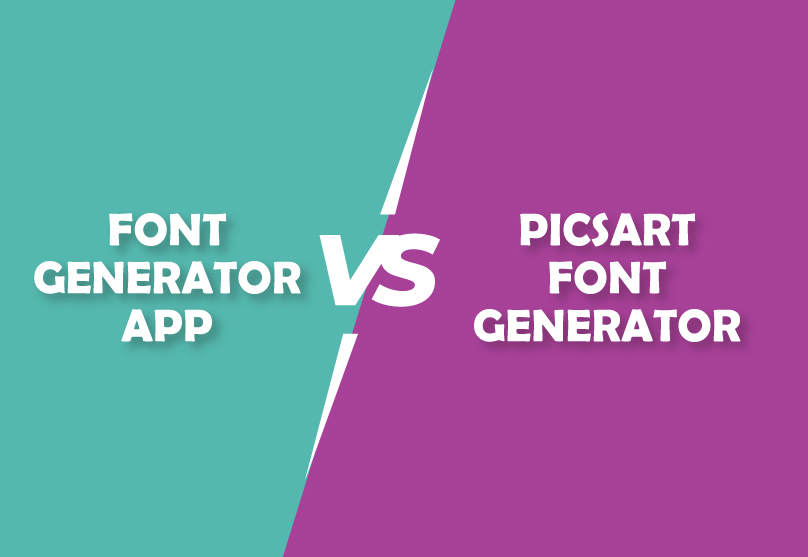
Variable fonts are without a doubt revolutionizing digital design. By providing designers with the ability to generate an endless array of unique variations using just one font file, they offer an unprecedented level of flexibility and authority that was previously unattainable.
This means that custom typography for projects can now be created by designers without relying on pre-made fonts. They can even animate their typefaces to make effects that are dynamic and catchy. Variable fonts are also making the internet more accessible. Beautiful typography is accessible to everyone, regardless of ability or vision, by allowing browsers to automatically adjust a font’s size and spacing to the user’s preferences.
Variable Font Technology
Variable fonts are created using the OpenType font format, which was developed by Adobe and Microsoft in the early 1990s. OpenType is an organization that is viable with a large number of elements, including variable text styles, and can be utilized on the two Windows and MacOS frameworks.
Before creating a variable font, designers must first create a master file.
This is a standard textual style record that contains the data about the typeface, including its all weight, width, level, and different highlights.
After that, special software enables designers to create master file variations. They can adjust the typeface’s weight, width, and height, as well as the space between words and letters, using this software.
The variable font file is finally packaged and prepared for use. Based on the user’s system settings and preferences, browsers or design software when a variable font file is encountered, can automatically select the most suitable variant for the user.
Advantages of Variable Fonts
Variable fonts offer a number of advantages.
Faster loading page
Pages that load faster Because there are less font data to download, the page loads faster.
At least initially, this will likely be the single greatest advantage of variable fonts on the internet.
Let’s say you’re on a website that only needs two variable font files but uses six different font styles. There are fewer server requests and fewer data downloads required for that page to display correctly because those two font files are smaller in size than the six you would have needed to load otherwise.
Accordingly, your website pages load more quickly. Additionally, users have better experiences on pages that load quickly than on pages that load slowly.
Fewer Compromises for Designers
There are fewer compromises for designers as a result of overall smaller font file sizes: Designers who are concerned about file size or who are restrained by managers and technical leads who are also concerned about file size do not have to make as many design compromises.
You won’t need as many conversations to start with: “The more variable fonts are used, the fewer conversations you’ll need. Is the Light Italic version of this font really necessary? It costs us an extra 100kb.”
Better tuning
Variable textual styles permit clients of the textual style to change its upheld boundaries in generally little additions, considering tweaking where wanted.
Take the usual illustration of font-weight. Font weight values in conventional fonts range from 100 to 900, but they are limited to the nearest hundred (assuming that each hundred is available as its own font file).
However, variable fonts can make it possible to meaningfully adjust the font weight to any number within the supported range. Do you want to split the difference between Bold (700) and Semi-Bold (600), which is normally 600? Set the text style weight to 650, and that is the thing you’ll get. You’d have to pick one over the other without a variable font.
Variable fonts enable typeface designers to create fonts that users can modify in a variety of ways.
Axes of Variation
An axis is a type of style variation that can be supported by a font. One typical axis of variation in a variable font is the weight of the font.
For every pivot of variety, the textual style client can change the style esteem inside a predefined range. One font, for instance, may permit users to adjust the font weight to any value between 300 and 800; A range of 1–999 might be supported by another font.
Numerous Style Combinations
If the font designer decides to do so, a single variable font can accommodate several axes. The user of the font can change the values of any or all of the supported axes.
As a result, there are a lot of different ways to style things.
For instance, in the event that a variable text style upholds weight in the scope of 200-900, and width in the scope of half to 150%, that is 70,000 style blends not too far off (and that is assuming the entire number of qualities as it were). If it supports a third axis with a 500-point range, you have 35 million possible combinations already!
Creative Variations
Using these axes of variation, UI designers may be able to alter routine elements like the weight, width, or italics-ness of a font. However, for more inventive modifications, a font designer can also create individual axes.
This could be as straightforward as reducing the size of capital letters, as specific as increasing the number of thorns on a font depicting a rose, or as absurd as altering the size of the hat that is displayed on the head of each emoji in an emoji-icon font.
Practical Axis
Axes that can be used in a practical way Custom axes of variation have advantages that go beyond just aesthetics.
For instance, a few variable textual styles have a “grade” pivot that permits you to change the heaviness of the text without influencing the width of the text. This would be useful in a UI design where, for instance, when an item is selected, text labels are bolded. However, it is essential to your design that UI elements do not change size.
If your all queries about variable fonts are cleared so, we recommend you the best online Font Generator tool (Fontgeneratorapp.com)





